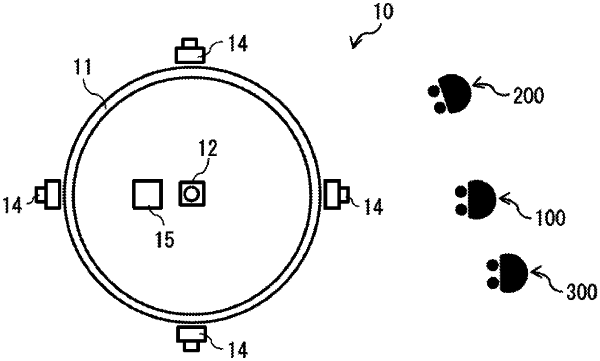| CPC H04N 13/363 (2018.05) [G03B 21/60 (2013.01); G03H 1/0005 (2013.01); G03H 1/0236 (2013.01); G03H 2001/0094 (2013.01)] | 8 Claims |

|
1. A display device, comprising:
a transparent screen;
at least one imaging unit; and
a video projection device configured to:
acquire positional information regarding a specific subject included in each of captured images obtained by the at least one imaging unit, and
irradiate the transparent screen with video light based on the positional information to cause a specific video to appear on the transparent screen for the subject, wherein the video projection device includes:
a projector configured to:
generate first video light as the video light and irradiate the transparent screen with the generated first video light, wherein generation of the specific video is based on the first video light, and
wherein the video projection device is further configured to:
move a position of the projector based on the positional information to cause the specific video to appear on the transparent screen for the specific subject, wherein
the transparent screen includes a screen having a shape of a cylinder and a double lenticular function in which a focal distance on an outer surface side is shorter than a focal distance on an inner surface side,
the screen includes two holograms each of which is of a transmission type, and
a shape of each of the two holograms is cylindrical.
|